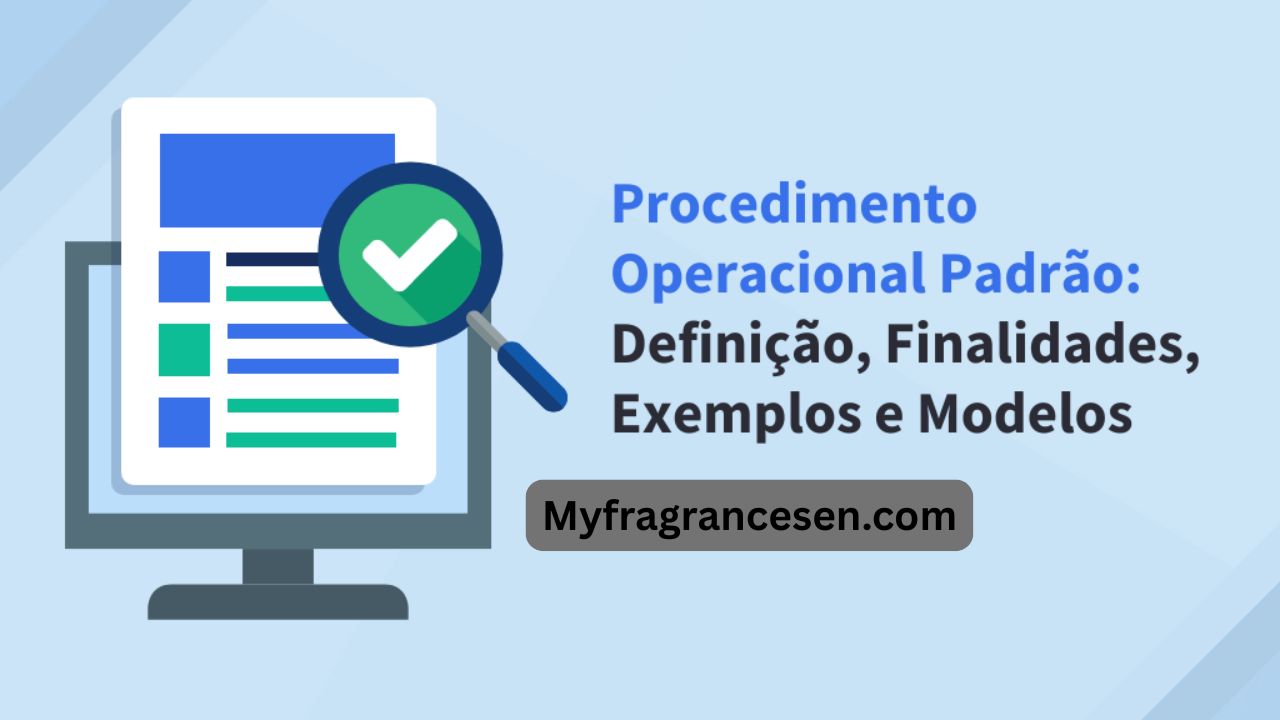In today’s demanding business environment, maintaining efficiency and consistency is essential. One of the most reliable tools to achieve this is the Protocolo Operacional Padrão, or Standard Operating Procedure (SOP). It acts as a roadmap for routine tasks, helping organizations maintain quality, safety, and compliance. Whether in healthcare, manufacturing, education, or hospitality, having a clear operational protocol ensures teams work smarter and more effectively.
What Is a Protocolo Operacional Padrão?
The Protocolo Operacional Padrão is a written document that outlines a step-by-step process for performing specific tasks. It’s designed to ensure that employees carry out their responsibilities in a consistent and standardized way, regardless of who is performing the task.
This protocol can cover everything from handling customer complaints to maintaining equipment. Essentially, it reduces guesswork and increases accountability by giving team members clear instructions to follow.
Why Every Organization Needs a Protocolo Operacional Padrão
Implementing a Protocolo Operacional Padrão offers numerous benefits that directly impact performance and organizational stability.
1. Ensures Uniformity Across Tasks
Having standardized procedures means that tasks are completed the same way, every time. This eliminates variations that could affect quality or efficiency.
2. Enhances Employee Training
New hires can quickly adapt to company standards when they have detailed SOPs. It reduces onboarding time and builds confidence among staff.
3. Improves Compliance and Safety
In industries like healthcare or food service, compliance with safety and regulatory guidelines is crucial. The Protocolo Operacional Padrão ensures procedures align with required standards.
4. Increases Productivity
Employees don’t need to waste time figuring out what to do next. SOPs reduce downtime and decision fatigue by providing clear directions.
5. Reduces Errors and Miscommunication
Detailed protocols help avoid misunderstandings, reducing the chance of costly mistakes or repeated corrections.
How to Create a Protocolo Operacional Padrão
Developing a strong Protocolo Operacional Padrão involves several key steps. Here’s a practical guide:
Step 1: Identify Core Processes
Start by identifying recurring tasks that impact your organization’s performance. These could be customer service procedures, equipment maintenance, or data entry processes.
Step 2: Consult Key Employees
Talk to the people who perform these tasks daily. Their input ensures the protocol reflects real-life operations.
Step 3: Document Clear Instructions
Write out each step in simple, actionable language. Avoid jargon and keep sentences concise. If needed, add visuals or flowcharts to improve understanding.
Step 4: Assign Responsibilities
Indicate who is responsible for each part of the process. Clarify roles and expected actions.
Step 5: Test the Protocol
Before rolling it out organization-wide, test it with a small group. Collect feedback and refine accordingly.
Step 6: Train Staff and Distribute
Once finalized, distribute the protocol to all relevant team members. Conduct training sessions to ensure everyone understands and follows it correctly.
Examples of Protocolo Operacional Padrão in Various Industries
Different industries benefit from customized SOPs tailored to their specific needs.
Healthcare
Hospitals rely heavily on SOPs for patient care, lab testing, medication administration, and surgical procedures to reduce risks and ensure patient safety.
Manufacturing
In factories, the Protocolo Operacional Padrão governs machinery operation, quality checks, inventory management, and safety protocols.
Retail and Customer Service
Retailers use SOPs to handle product returns, manage inventory, and ensure consistent customer service.
Hospitality
Hotels and restaurants use protocols for cleaning, guest check-ins, food preparation, and staff hygiene.
Best Practices for Maintaining Your Protocolo Operacional Padrão
Creating the protocol is just the beginning. Maintaining it is equally crucial. Here’s how:
1. Keep It Updated
As technologies and procedures evolve, so should your SOPs. Review them at least annually or after any major change.
2. Make It Accessible
Store SOPs in a centralized, digital platform so staff can access them anytime. Avoid outdated paper manuals that no one reads.
3. Encourage Feedback
Allow employees to suggest improvements. This not only strengthens the protocol but also increases team engagement.
4. Monitor Implementation
Check regularly if the SOPs are being followed and evaluate their impact on performance and outcomes.
Digital Transformation of the Protocolo Operacional Padrão
With the rise of digital tools, many companies are now shifting to digital SOP systems. These platforms allow:
-
Real-time updates and access
-
Interactive checklists
-
Multimedia instructions (videos, diagrams)
-
Performance tracking and audit trails
Digital solutions make the Protocolo Operacional Padrão more dynamic, accessible, and effective—especially for remote or multi-location teams.
Common Mistakes to Avoid When Creating SOPs
Even with the best intentions, many SOPs fail due to avoidable errors. Here’s what to watch out for:
-
Too Generic: Avoid vague or broad steps. Specificity is key.
-
Overly Technical: Use simple language anyone in the role can understand.
-
Not Reviewed Regularly: An outdated SOP can cause more harm than good.
-
No Training Provided: Don’t assume reading the SOP is enough. Proper training is essential.
Conclusion: Making the Protocolo Operacional Padrão Part of Your Culture
A well-designed protocolo operacional padrao is more than a document—it’s a strategic tool that supports excellence across every area of your organization. From improving quality and reducing errors to boosting employee confidence, the benefits are substantial.
To make the most of it, don’t treat it as a one-time project. Integrate it into your training, daily operations, and continuous improvement processes. When done right, SOPs become a core part of a company’s DNA, fostering a culture of clarity, accountability, and efficiency.

